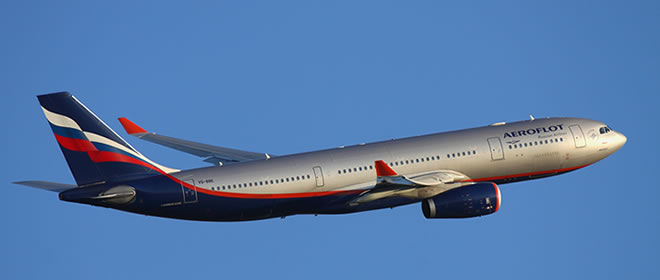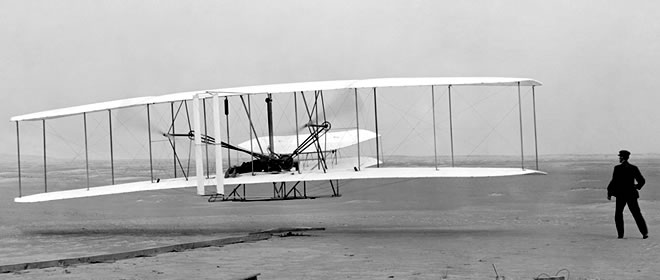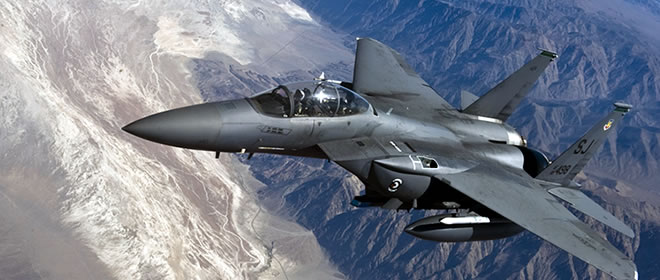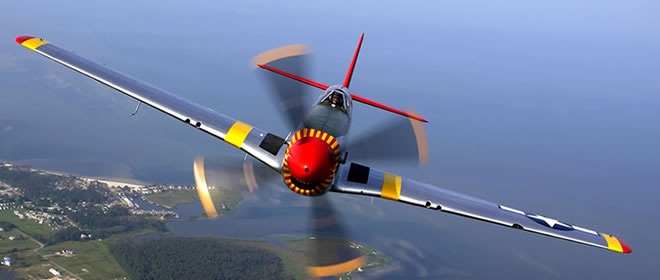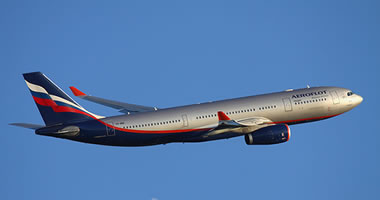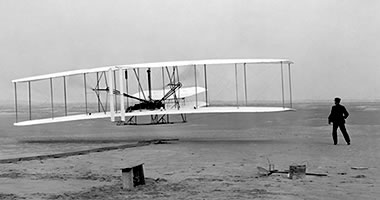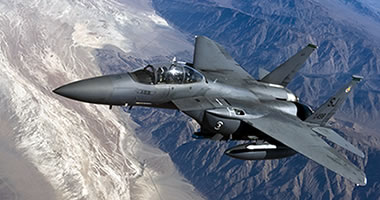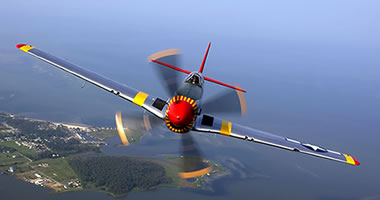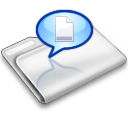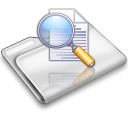Edinburgh Airport
*EDINBURGH: Military aerodrome later major civil regional airport. This airport was, up until the 1970s at least (?) referred to as TURNHOUSE AIRPORT
(Previously known as *RAF TURNHOUSE - see seperate listing)
Note: Copyright D McIntosh possibly? Copied from an issue of Flypast magazine.
Note: All pictures by the author unless specified.
ICAO code: EGPH IATA code: EDI
Military users: WW1: Royal Flying Corps
Home Defence Flight Station 1916 to 1917
Base and Night Landing Ground for 77 (HD) Sqdn (BE.2s & BE.12s) 1917 to 1919
RFC Training Squadron Station 1916 to 1918
(RNAS Fleet Trials Station?) Perhaps more likely RAF Fleet Practice Station and Aircraft Repair Depot 1918 to 1920
NOTE: In July 2024 I was kindly contacted by Mr Julius Blomme. He tells us that the Ministry of Munitions tried to sell TURNHOUSE in 1919. Much to the surprise of the Earl of Rosebery, (a former PM), who actually owned the grounds!
Between wars: 1925 Auxiliary Air Force
No. 603 “City of Edinburgh” Squadron (Originally DH.9As, later Hawker Harts & Hinds in the mid to late 1930s)
WW2: RAF Fighter Command 13 Group
*Battle of Britain RAF Sector Station (TURNHOUSE)
(10th July 1940)
79, 245 & 253 Sqdns (Hawker Hurricanes)
603 Sqdn (Vickers-Supermarine Spitfires)
Note: Please see a separate listing under TURNHOUSE for more WW2 info.
Post WW2: 151 Sqdn (Gloster Javelins)
207 (Communications) Sqdn (Beagle Bassett C.1s, Percival Devon C.2s & Percival Pembroke C.1s)
Note: Did 207 Squadron operate all these types whilst based here?)
1975: RAF (Chipmunks & Devons)
1980s: East Lowlands UAS (Bulldogs) 12 AEF (Chipmunks)
The John Stroud Collection:
Note: I had originally guessed this picture may have been taken in the 1950s. In March 2016 I was contacted by Sandy Allison who kindly dated this picture as being taken in the summer of 1971. See 'Comments' below.
A MICHAEL T HOLDER GALLERY
As is often said, a picture is worth a thousand words, and, the camera cannot lie. Therefore the third B&W aerial photo is of great interest as there is no sign at all of the old aerodrome dating back to WW1. The fourth and fifth pictures were taken by the Luftwaffe in 1939.
Operated by:
1965: Ministry of Aviation
1975: British Airports Authority
1990/2000: Edinburgh Airport Ltd
Civil activities: Airline, air freight, charter, maintenance, GA business, private and training
British airline users: Pre 1940: Aberdeen Airways, Allied Airways (?)
WW2: Allied Airways (?)
Post 1945: Air Anglia, Airtours International, Air UK, Allied Airways, Autair, BA (British Airways), BEA, BKS, Britannia Airways, British Caledonian Airways, British Eagle, British Island Airways, British Midland Airways, British United Airways, British World Airlines, Brymon Airways, Business Air, Caledonian Airways, Channel Express, easyJet, Emerald Airways, Flightline, Flybe, Gill Aviation, Globalflyer, Loganair, Monarch Airlines, Thomson fly
Foreign airline users: Post 1945: Aer Arran, Aer Lingus, Aero Lloyd Flugreisen, Air Europa, Air France, Air Malta, American Trans Air (AMTRANS), Cross Air, European Air Transport (Eurotrans), Intersun, Nor-Fly, Ryanair, Wizz Air
Air cargo: Post 1945: TNT International
Charter, air taxi: Post 1945: Air Atlantique, Air Charter (Scotland), Alidair, Cabair, Channel Airways
Pleasure flights: Pre 1940: Scottish Aerial Transportation Co?
Flying club/schools: Post 1945: Edinburgh Flying Club, Turnhouse Flying Club
1959 ‘snapshot’. Edinburgh Flying Club, Turnhouse Air Centre
A MIKE CHARLTON GALLERY
Note: These pictures from postcards were kindly sent by Mike Charlton who has an amazing collection. See, www.aviationpostcard.co.uk
First picture: This shows two Douglas DC-3s, the 'standard' regional European airliner of the post-war years. Most of these were civilianised versions of ex-military C-47s. On the left is a BEA (British European Airways) example, with a Aer Lingus example on the right sporting their new and rather controversial livery which was introduced in 1956. Prior to this, as far as I know, all airliners had either an all-over unpainted fuselage or the top painted in white.
Second picture: This great picture of a BEA Douglas Dc-3 was dated 1961. Probably one of their 'Pionair' Class 'Daks' which had been upgraded by Scottish Aviation at PRESTWICK.
Third picture. This evocative picture is of the BEA Vickers 701 Viscount G-AMOH which served BEA from July 1953 until January 1964. It then served with Channel Airways for roughly a year and a half from February 1964 until October 1965. It was then sold to Cambrian Airways based at RHOOSE (CARDIFF/GLAMORGAN) airport until September 1972. It then appears to have been scrapped. Ironically perhaps, Cambrian was brought out by BEA which was later to become part of BA (British Airways).
Fourth picture: And another evocative picture from a past era. This BEA colour scheme, with the 'large' red square on the tail, was applied from 1960 to 1971.
NOTE: The captions for all these pictures refer to 'TURNHOUSE AIRPORT' Edinburgh.
Fifth picture: This Spitfire was original and stood outside the RAF Station at TURNHOUSE. The 'Spitfire' you can see today near the passenger terminal is a full-size GRP model.
Sixth picture: Seen here is an Aer Lingus 700 Series Vickers Viscount, and beyond a BEA Vickers Vanguard. Aer Lingus were one of the first airlines to purchase Viscounts, from 1951 and the new 'green-top' livery appeared in 1956. As BEA were a launch customer for the Vanguard in July 1955, this picture can be dated to the mid 1950s - 1955/1956.
Seventh and eighth pictures: I think the car in the seventh picture is an Austin Maxi, produced from 1969 to 1981. As the new terminal opened in 1977, it seems that this picture, and the eighth picture, were both probably taken between these dates.
Ninth picture: The Vickers 953 Vanguard, G-APEN, served with BEA from September 1957 to January 74. Then being sold to Indonesia. The 'blue-tail' BEA colour scheme was applied from 1968 to 1979. This indicates that this picture was taken between 1968 and 1974.
Tenth and twelth pictures: The new terminal was opened in 1977 and must surely be considered as one of the most brutal and ugly major buildings constructed in the UK. This was, in those days, a common problem when, due to inadequate training and education I suppose (?), most architects could not aspire to the ideals formed before WW2, whereby pure function could be realised as a thing of beauty in its purest form. Perhaps they just didn't care? Take the money and piss off. Compare this to the terminal at STANSTED opened in 1991.
I did have the twelth picture initially captioned as being in the 2000's. Gawd knows why - can't explain it. Hence, thanks to the 'Comment' by Graeme Simpson below, this serious gaff has now been amended. Mind you, this is an excellent example of exactly why publishers employ sub-editors and proof-readers.
Eleventh picture: The BAC One-Eleven 501EX, G-AWYT, served with British Caledonian from February 1969 to April 1988. It was then chartered to BA (British Airways) until January 1994 before being sold on to Zaire in Africa. Seen beyond is a Cambrian Airways Vickers Viscount, and Cambrian were absorbed into BEA in 1974. So, it seems reasonable to suppose that this picture was taken between 1969 and 1974.
Location: N of A8, SW of Turnhouse, 5nm W of Edinburgh
Period of operation: 1915 to present day (Some records say opened in 1916)
Site area: WW1: 149 acres 1417 x 411
Note: These maps are reproduced with the kind permission of Pooleys Flight Equipment Ltd. Copyright Robert Pooley 2014.
Runways: WW2: 08/26 1036x46 hard 13/31 1057x46 hard
04/22 655x46 hard
1965: 08/26 1053x46 hard 13/31 1829x46 hard
1990: 07/25 2560x46 hard
(Old airport: 08/26 909x46 hard 13/31 1829x46 hard)
2000: 06/24 2560x46 hard
12/30 1796x46 hard (sole remaining WW2 runway on the “old” airport)
A GRAEME SIMPSON GALLERY
Notes: These pictures were very kindly sent by Graeme Simpson in January 2018. The first picture of the BCAL One-Eleven was taken in the early 1970s.
Third picture: The BAC One-Eleven 518FG, G-BDAT, served with Dan-Air from February 1975 to November 1992.
Fourth picture: And what a great picture to end on - always hard to beat a picture of Concorde. As with the second and third pictures, all were taken in March 1980 with a most picturesque snow laden landscape. I tried to find out more about Concorde visits to EDINBURGH, but apart from a visit before it retired - failed miserably. Which seems a tad odd given the pre-eminence the type had in civil aviation history. Or, perhaps of course, maybe Concorde didn't make any more visits? Could somebody can kindly offer more advice?
Having made this request Graeme Simpson very kindly sent me this list; although he points out it might not be a full list. The series of flights conducted from EDINBURGH to CHARLES de GAULLE AIRPORT (PARIS) in 1990 included two flights which were supersonic departing from and arriving back at EDINBURGH
| F-BVFC | Air France | 20.03.1980 |
| G-BOAF | British Airways | 29.11.1983 |
| G-BOAE | British Airways | 30.11.1983 |
| G-BOAD | British Airways | 27.08.1984 |
| F-BTSC | Air France | 01.10.1989 |
| F-BVFA | Air France | 15.09.1990 |
| F-BVFA | Air France | 16.09.1990 |
| F-BVFA | Air France | 17.09.1990 |
NOTES: Here’s a good example of the sort of situation which tied me up in knots. It would seem according to most people researching and writing on the subject of aviation history that flying activity commenced here in 1915. Others say 1916 according to offical records. Nothing seems to be simple when researching aviation history as I discovered one record regarding the early issue of Pilot Certificates. I had absolutely no intention of getting sucked into any kind of detail when starting out, intending to simply find the bare bones of proof, but the subject has simply got more and more fascinating over the years.
For example I trust you will imagine my curiosity at to exactly why, when Robert Wilson was awarded his Pilot Certificate No.2047 in the autumn of 1915, the records show the date of his qualification as being 08/07/14 when flying a Caudron Biplane from EDINBURGH! I wouldn’t even attempt trying to discover the reason for the time lapse evident here but it does raise the question if the EDINBURGH referred to is actually this location? Or so I said at the time. I have since learnt that in those days the license dated from the date of issue, not when the flying test was performed - but this disparity in dates seems to defy explanation? I suspect a simple mistake? So, was his license issued in 1914, or 1915?
1916
During WW1, from 1916 it seems, TURNHOUSE was the most northerly base of the RFC fighter squadrons forming a line of defense against the so-called ‘Zeppelin’ threat. It should never be under-estimated just how great the fear of German bombing raids was at that time but I say “so-called” for two reasons.
A) Not all German airships were built by Zeppelin.
B) The Germans had at least one heavy bomber type, the Gotha, and these certainly raided south-east England. This airfield remained in military use (partly) until at least the early 1960s.
A LITTLE KNOWN ASPECT?
Mike Holder, a great friend of this 'Guide' found this article published in the Linlithgow Gazette on Friday the 19th July 1929. I knew that Cobham had visited Edinburgh, but certainly did not know that he had arranged to fly into TURNHOUSE.
This Tour by Sir Alan Cobham was unique. Nothing like it since has been seen in the U.K. Starting at Oxford in May, flying mostly the de Havilland DH61 ten-seater 'Giant Moth' G-AAEV named 'Youth of Britain', he had arranged to visit 107 towns and cities around Great Britain, to promote the concept that municipal aerodromes should be laid out, many if not most serving as regional airports. TURNHOUSE was his 34th venue, arriving on Saturday 13th July. He stayed for the weekend before departing for LANARK on the 15th.
In the end, after a couple of crashes and other problems, he managed to visit 97 venues. Which was of course a magnificent achievement. Each day he was fully occupied. Typically after arriving at around 11.00 he would fly the local worthies such as the mayor around the local area. This would be followed by a slap up luncheon, usually at the town hall, with a speech exhorting them to provide an aerodrome at least, or in this case, a regional airport. He would then fly sponsored school children, (at least forty), before offering the public flights - usually until dusk. The fares paid being to offset the costs of the Tour.
As a grandiose plan it was without equal. Very few towns and cities responded quickly, but, he certainly helped to bump start the idea within many locations, during the 1930s, (an era during the Great Depression), that aerodromes and regional airports were essential in the economic recovery. We must of course bear in mind, that this era barely affected the well off by and large, and private flying and the emergence of regional airlines also took place during this period.
A RECORD!
In his excellent book Taking to the Skies Graham Smith quotes the following story. “On the 10th February, (1938? my note), Hurricanes were headline news when Sqn. Ldr. J W Gillan, the Commander of 111 squadron, flew one from TURNHOUSE to NORTHOLT, a distance of 327 miles, (I reckon it’s about 420 by road incidentally), in forty-eight minutes at an average speed of almost 409mph. The Air Ministry was quick to appreciate the publicity value of this….” It appears Gillan took advantage of a 60mph tailwind so it is also clear that governmental ‘spin’ is nothing new!
WORLD WAR TWO
In July 1940 at any rate TURNHOUSE had the greatest number of squadrons of any Battle of Britain RAF Station in the UK. Most Stations had only one or two squadrons and it appears only DIGBY in YORKSHIRE and TANGMERE in SUSSEX had three squadrons. By the 1st August 1940 it appears only 253 and 603 Sqdns remained. 79 Sqdn had been posted to ACKLINGTON (NORTHUMBERLAND) and 245 Sqdn to ALDERGROVE (NORTHERN IRELAND). On the 1st September 1940, it now seems only 141 Sqdn were based here flying the by then defunct Bolton-Paul Defiants. Obviously the priorities as to how this region should be defended had changed very quickly, which may appear odd given the following information.
THE FIRST ACTION
In his excellent book Spitfire's Forgotten Designer, Mike Roussel tells us: "On the 16 October 1939, the first Luftwaffe attacks of the Second World War on Britain began when Junkers Ju88s of I./KG 30, led by Hauptmann Helmuth Pohle, started attacking the warships in the Royal Naval Base at Rosyth on the Firth of Forth. Spitfires from 602 (City of Glasgow) Squadron at RAF Drem and 603 (City of Edinburgh) Squadron at RAF Turnhouse were scrambled to meet the attacking Ju 88 bombers. Three Spitfires from 603 Squadron attacked Pohle's aircraft, causing it to ditch in the sea off Scotland's east coast. Pohle was the only survivor and became a prisoner of war. While this was happening other Spitfires from 603 Squadron shot down a Heinkel He 111 whose task was to photograph the results of Pohle's raid, and later on that day another He 111 was shot down by the same squadron.
OTHER WW2 USERS
63 Sqdn (Hawker Hurricanes)
81 Sqdn (Vickers-Supermarine Spitfires)
141 Sqdn (Gloster Gladiators then Bristol Blenheims, later Bolton Paul Defiants. They then moved away, (and in the process also converted to Bristol Beaufighters), before returning back here for a short stay.
289 & 290 AAC Sqdns (both flying target towing Airspped Oxfords & Hawker Hurricanes)
304 (Free French) & 603 “City of Edinburgh” Sqdns (Vickers-Supermarine Spitfires)
1947
In 1947 TURNHOUSE became the primary civil airport for Edinburgh and the “fine modern terminal building” opened in 1956 primarily to segregate civilian and military activities. In 1959 BEA were operating services to London, (HEATHROW), Glasgow (RENFREW), Birmingham (ELMDON), Aberdeen (DYCE) and Orkney (KIRKWALL). BKS operated to Belfast (NUTTS CORNER) and Newcastle (WOOLSINGTON), plus Silver City Airways offered a service to the Isle of Man (RONALDSWAY). It appears the only foreign airline was Aer Lingus with a service to Dublin.
1959
GA activity in 1959 seems restricted to the Edinburgh Flying Club operating just two DH Tiger Moths, G-AJVE and G-ANFV.
1992
When in 1992 Austin J Brown and myself embarked on our joint book projects for Ian Allan, flying a Cessna 172 into most of the major UK airports, Edinburgh was - for me at least - of especial interest as we also used it as a base to photograph the two bridges crossing the Firth of Forth.
Doubly memorable because, whilst circling around and around waiting for a clearance to photograph the two bridges, we very nearly collided with a large flock of geese!
Sandy Allison
This comment was written on: 2016-03-03 16:51:40your 1st Photograph here: Edinburgh circa late 1950s? I can date this as summer 1971 due to a recently installed main HP gas pipe and also a a pony trotting track, both visible in the photo Type your text here....
Graeme Simpson
This comment was written on: 2018-01-16 19:54:31The second of the pics of the new airport is almost certainly dated in the late 1970s. This is based on the models of cars in the carpark, and the number of cars parked. By the 2000s there was an extension on the face of the terminal to accommodate the revised layout for additional security, etc.
Murray Smith
This comment was written on: 2021-01-24 20:44:47Hi - thanks to Graeme Simpson for confirming that Air France Concorde F-BTSC departed from Edinburgh on 01 Oct 1989. Flight was AF4865 at 1635 hrs to Paris and I think went went supersonic over Bay of Biscay. My Mum, Ages Smith was on the flight.
We'd love to hear from you, so please scroll down to leave a comment!
Leave a comment ...
Copyright (c) UK Airfield Guide
